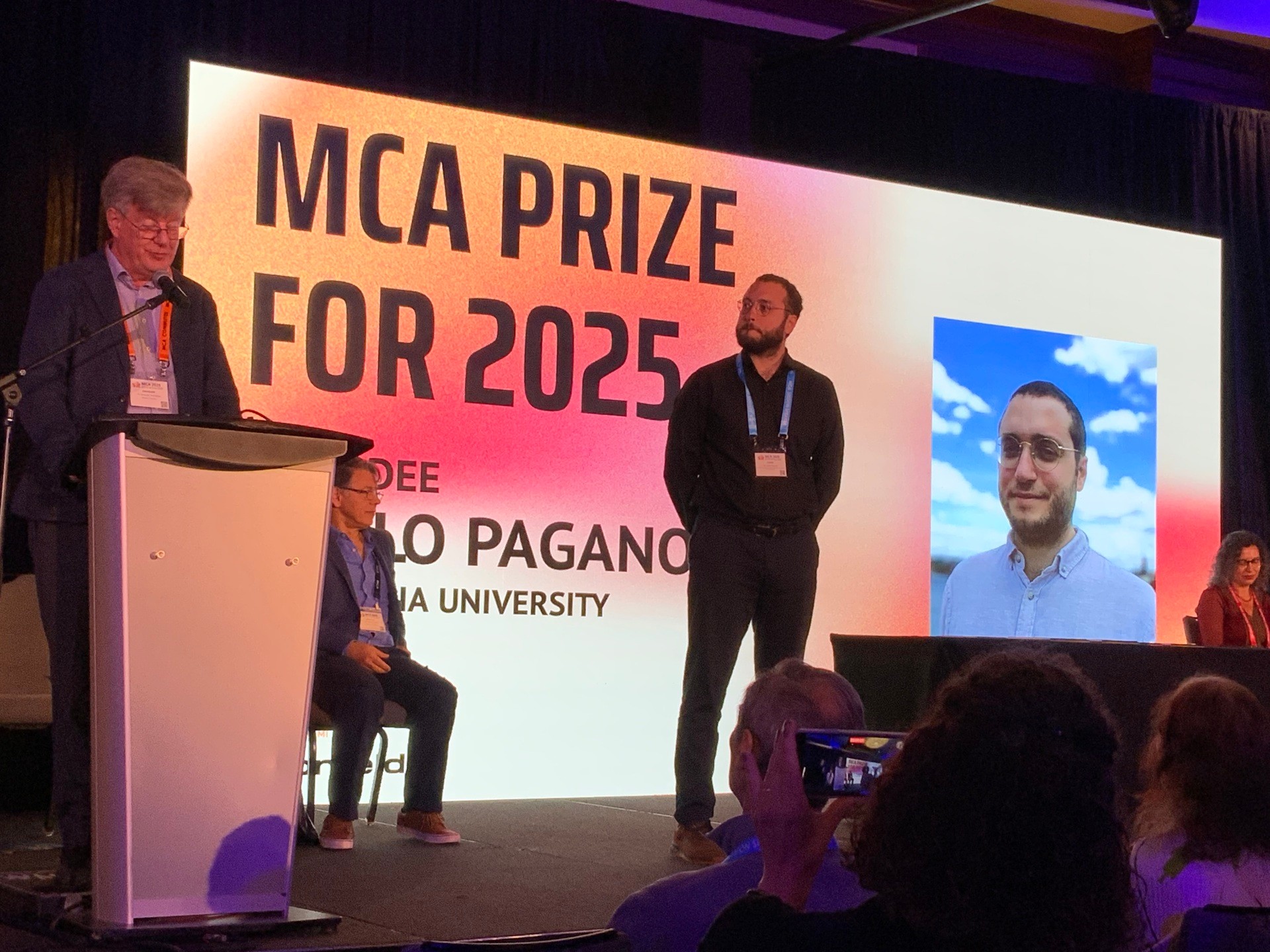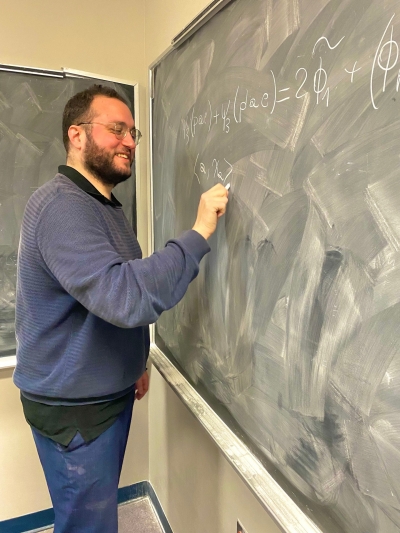Definitive answers
Pagano earned a PhD in 2018 from Leiden University in the Netherlands. After postdoctoral positions at the Max Planck Institute for Mathematics in Bonn and at the University of Glasgow, Pagano joined the Department of Mathematics and Statistics at Concordia in August 2022.
But Pagano’s love of math began at about the age of 17. “I was reading philosophy and playing piano most of my days. But I became interested in neuroscience and figured I had to learn some math.
“A friend gave me a book with puzzles meant to prepare high school students for math competitions. I spent the summer in Italy going through them, got hooked and never looked back.”
His background in philosophy has served him well in exploring complex puzzles, but he eagerly abandoned the frequent murkiness of this former focus. As he explains, “I was never satisfied with my understanding. In math, you know when you’ve figured something out. There is this level of precision that’s a bit unique to the subject.”
Building pathways
Having spent most of his life across the Atlantic, Montreal’s European flavour appealed to Pagano. But it was Concordia’s association with an important, internationally renowned number theory collective that really drew him to the university. Composed of mathematicians across Concordia, McGill and UdM, the Centre interuniversitaire en calcul mathématique algébrique (CICMA) meets regularly in a designated space within the J.W. McConnell (LB) Building.
As Pagano notes, teaching math is in many ways the opposite of performing math given that you are working backwards — from the absolute to the unknown.
“You have to explain how one arrives at these ideas,” he explains. “Once you see formulas in action, they clearly work, but how on earth do you come up with that idea? It’s mysterious, you have to break it down, and that activity is very interesting. I like it a lot.
“It isn’t always clear how to build pathways. You know where you want to go, but you need to walk all the way from the things you know to be true to the thing you hope to prove to be true. Sometimes it’s obvious, but sometimes there are twists, clever tricks or things that appear completely out of the blue. You must somehow make sense of all this to students.”
Twenty-three problems but the 10th ain't one
In the year 1900, celebrated mathematician David Hilbert compiled a list of 23 mathematical problems. Most remain unresolved.
“The problems asked at the International Conference of Mathematics in Paris by the very influential mathematician, Hilbert, are considered ancient history. They were however, very influential, and many people worked on these throughout the century.”
The focus of Pagano’s recent work is the 10th problem, one that concerns Diophantine equations, that is, “polynomials with integer coefficients, such as x2 + y2 = 5.”
Julia Robinson made some headway on the 10th problem in the fifties, as did Yuri Matiyasevich in the seventies. As Pagano notes, “It was partially solved, and more progress stemmed from this. The problem became increasingly specialized and eventually, was neighbouring things that I’ve been thinking about, so I had a shot at it.”
Pagano and his collaborator Peter Koymans eventually had a landmark breakthrough in December 2024. Shortly after, another group found an alternative argument following, in its broad strokes, the same method, but applied to very different objects. Nearly a century and a half later, Hilbert’s 10th problem is settled — insofar that mathematicians can now explore where undecidability ends and decidability begins.
Find out more about Concordia’s Department of Mathematics and Statistics.


 Photo courtesy of the Mathematical Council of the Americas
Photo courtesy of the Mathematical Council of the Americas
 Carlo Pagano | Photo by Maude Dufour-Gauthier
Carlo Pagano | Photo by Maude Dufour-Gauthier


